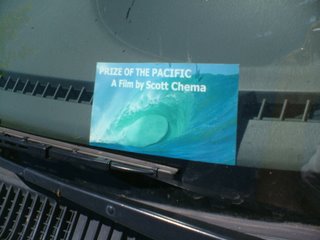[Bad news: Myspace is down, or appears to have deleted my profile or some rubbish... so I'm posting here exclusively until further notice.]
Day 2 of writing has been also very productive... I'm aiming for 110 page final draft, so finishing at 15.5 pages this morning (in only 90 minutes!) leaves me at 14% of the entire script. The term "happy" doesn't even cover it.
What's crucial for me to keep in mind as I write first drafts is to constantly remember that the first draft won't be perfect. Nor should it be. First drafts are about quantity, not quality. Broad strokes. Details will come much later.
For now, however, I must say that I think this first draft reads quite well and is even—dare I say it?—compelling. I'm unashamed to say I'm basing my screenwriting tone on Walter Hill and David Giler's excellent screenplay for Alien. I mean, just look at the economy of exposition in Alien's first few scenes:
INT. ENGINE ROOM
Empty, cavernous.
INT. ENGINE CUBICLE
Circular, jammed with instruments.
All of them idle.
Console chairs for two.
Empty.
INT. OILY CORRIDOR - "C" LEVEL
Long, dark.
Empty.
Turbos throbbing.
No other movement.
INT. CORRIDOR - "A" LEVEL
Long, empty.
INT. INFIRMARY - "A" LEVEL
Distressed ivory walls.
All instrumentation at rest.
INT. CORRIDOR TO BRIDGE - "A" LEVEL
Black, empty.
INT. BRIDGE
Vacant.
Two space helmets resting on chairs.
Electrical hum.
It's all straight to the point, no nonsense—not even a "DAY" or "NIGHT" reference
because it's in space. The sparseness of words, and the topic it describes, establishes its spookiness. Perhaps most importantly, it's a fast read.
As a screenwriter, I've come to learn that screenplays are not novels, but intermediary steps which need not carry a novel's level of detail because screenplays aren't meant to be published—instead, they are only a guide for production. Unless you know the script is absolutely going to be produced, in which case it doesn't matter how florid your prose is, you need to ration out words as if your life depended upon it. This sounds like common sense, and honestly, I learned this lesson years ago when I first started writing scripts, but some lessons take years to sink in.
My intent with this script is produce it myself (or with my own investors, to be exact), so if I really wanted to, I could get very detailed and it wouldn't matter. However, I would like to enter this script in a few choice contests to give it some publicity should it get to the quarterfinals, or even win. That might lead to more funding, which ain't bad. So if it's contest-bound, it needs to be a good read, a fast read, compelling. Entertaining.
Writing Day 3 will be putting the campers into the woods at last... I'm already salivating.








